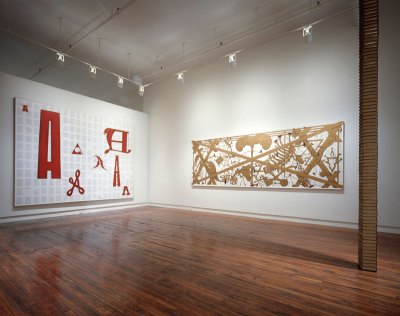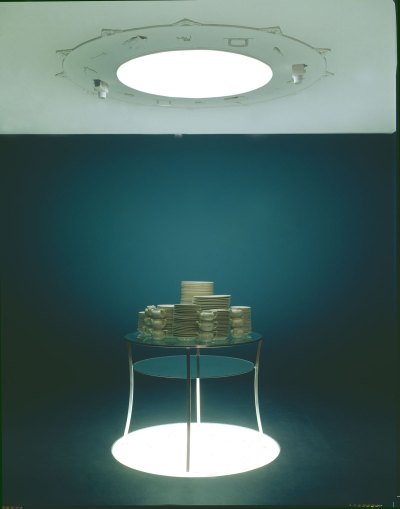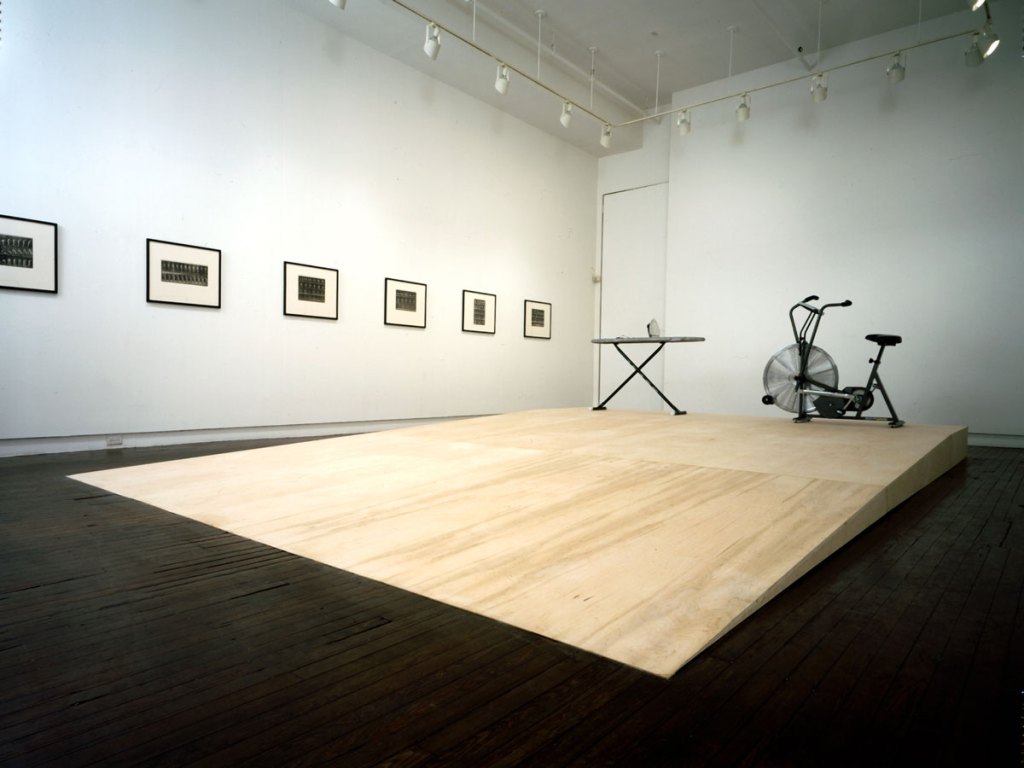Lari Pittman’s first New York solo show, the first time Nan Goldin showed prints of her famed The Ballad of Sexual Dependency (1985), Barbara Bloom’s conceptual reimagining of the Titanic’s ocean-floor detritus, Catherine Opie’s “L.A. Freeways” and “Mini Malls” series, a group show featuring Eadweard Muybridge, Michael Snow, and Haim Steinbach. All this and much more is part of the exhibition history of Jay Gorney Modern Art, a seminal New York gallery that ran for nearly a decade and a half but whose contributions have slowly receded from art world memory.
To avoid this type of amnesia, Independent, which runs two art fairs in New York alongside a publishing venture, and Contemporary Art Library, an organization that grew out of the closely watched website Contemporary Art Daily, partnered earlier this year to form the New York Gallery History Project. The fruits of these labors, via the launch of the archives of Jay Gorney Modern Art, are now digitally accessible for the first time.
The idea for the New York Gallery History Project grew organically, according to Forrest Arakawa-Nash, executive director of the Contemporary Art Library.
“We started hearing more and more from people that were using the site as a de facto archive of recent art history,” Arakawa-Nash told ARTnews. “We created Contemporary Art Library to answer this apparent need for a trustworthy, high-quality resource for learning about the work of today’s artists.”
That led the Contemporary Art Library to create a dedicated platform for this archive and the organization quickly “started discovering opportunities to save material that had disappeared from public view—we began collecting material from spaces which had closed down in order to prevent as many corners of art history from disappearing as we can,” he added. That portion of the platform includes Foxy Production, Off Vendome, Paradise Garage, Cleopatra’s, Matthew, and New Jerseyy.
Independent founder Elizabeth Dee said she was interested in collaborating on the New York Gallery History Project with Contemporary Art Library because “it’s part of my passion of being a former gallerist myself and looking to the East Village scene of the 1980s as a real touchstone.” (Dee ran her eponymous gallery from 1997 until 2016; the gallery’s archives from its final decade of operation are also archived on Contemporary Art Library.)
She added, “Jay Gorney Modern Art has a really rich history that is consequential.”
But more recently as she has begun curating shows on the recent past, Dee noticed a gap. “One thing I realized is this notion that people are not getting credit for the curatorial work they’re doing in galleries if their galleries close,” she said. “Often when other galleries take on consequential artists, they will do a kind of revisionism about where they showed, and kind of develop a more linear narrative than most artists really have. It’s important for historians to have access to those early shows.”

Installation view of “Tim Rollins + K.O.S.,” 1988, Jay Gorney Modern Art, New York.
Courtesy Jay Gorney Modern Art
Jay Gorney Modern Art opened on 10th Street in the East Village in 1985 before moving to Green Street in SoHo in 1987, where it operated until 1998. During this time, Gorney mounted exhibitions for some of that generation’s leading artists, including Opie, Bloom, Pittman, Peter Nagy, Roni Horn, Tim Rollins + K.O.S., Jessica Stockholder, and Gillian Wearing, as well as more established artists like Joseph Kosuth, Michelangelo Pistoletto, and Allen Ruppersberg.
“There are a lot of things in this archive that should be of great interest to artists and scholars,” the gallery’s namesake Jay Gorney told ARTnews, noting that he “was very surprised” when Dee reached out to him about the project. He added, “But, I thought it was wonderful because I really applaud the idea.”
Dee added, “What I keep thinking a lot about with this project is the role galleries play in shaping art history. The market is a part of art history—they are speaking to each other.”
Prior to launching his own gallery, Gorney interned with Leo Castelli and worked at Sidney Janis and Hamilton galleries, as well as participating in the Whitney Independent Study Program in 1972–73. After closing his gallery, Gorney cofounded Gorney, Bravin + Lee in 2001 with Karin Bravin and John Post Lee in Chelsea. That partnership ended in 2005 and Gorney became a director at Mitchell-Innes & Nash, which took over Gorney, Bravin + Lee’s space on West 26th Street. (The current project has included some digitalization of items related to Gorney, Bravin + Lee, but those are not included in this launch.)

Installation view of “Robert Gober, Jeff Koons, Peter Nadin, Meyer Vaisman,” 1986, Jay Gorney Modern Art, New York.
Courtesy Jay Gorney Modern Art
The contents for each exhibition in the Jay Gorney Modern Art Archive are varied. Some feature just one to two installation shots, while others include multiple as well as images of individual works and even a show’s invitation in some cases. What’s primarily missing are paper materials from Gorney’s archive, which were stored in the basement of the Chelsea Art Building and were destroyed when it flooded in 2012 during Hurricane Sandy.
What Gorney did have was boxes of color transparencies and slides that were stored at his home; the New York Gallery History Project draws primarily from this. But Gorney is hopeful that this archive will continue to grow. “It’s a living archive and we will continue add to it. It’s not carved in stone at this point,” he said, noting that while working on the project he reached out to the exhibiting artists, their current galleries, and others to help round out the digital offerings.
The digitalization of the gallery’s archive took around six months, involving organizing and identifying each item and situating it within the gallery’s chronology. It is also the largest digitalization project that Contemporary Art Library has taken on thus far.
“It’s been very meaningful and very moving actually—and a little disturbing as one thinks about one’s mortality and one’s own legacy,” Gorney said about working on the digitalization project.

Installation view of “Barbara Bloom: The Tip of the Iceberg,” 1991, at Jay Gorney Modern Art, New York.
Courtesy Jay Gorney Modern Art
The New York Gallery History Project will next turn its attention to digitalizing the archives of Orchard, which operated on the Lower East Side from 2005 to 2008, and Queer Thoughts, which opened in Chicago in 2012, relocated to Tribeca in 2015, and closed in 2023.
Speaking to the project as a whole, Dee said she wanted to make sure that these archives are digitized and accessible as soon as possible, which isn’t always the case when galleries donate their archives to libraries who often don’t have the resources to digitize quickly. “Even though they’re in a safe place and can be accessible by appointment, they’re not really part of the discourse because they’re not available to everyone,” she said.
The launch of the New York Gallery History Project comes during a wave of several gallery closures this year. Gorney said that when he operated his gallery it was a different moment in the art world, as it was much smaller and not dominated by mega-galleries. But he hopes “this project does have resonance because it will show both artists and gallerists and young gallerists that things can be done and approached in many ways, and having an art gallery can be approached in a thoughtful, cerebral kind of way.”



